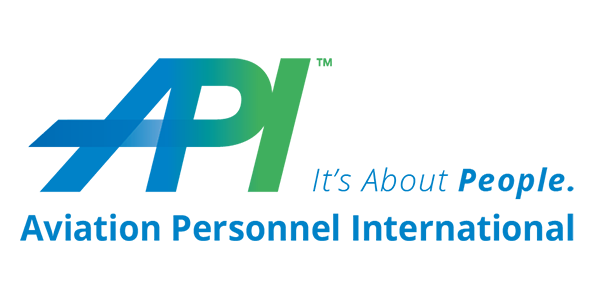When it comes to business networking, some say that it’s all about “who you know.” But I respectfully disagree.
Contrary to some people’s beliefs, good networking isn’t necessarily about who knows you, how many industry events you attend or the size of your Outlook contacts and Facebook following.
Instead, I find that networking is about investing in others and committing the time needed to develop and maintain your relationships. It’s also about creating new connections and not just resting on the contents of your LinkedIn profile or “Rolodex.”
How to Build Your Business Network
If it’s true that nine times out of ten we’ll get our next job because of our network, then why do so many of us push networking aside—as if it’s something we’ll get to when we have time?
Just like eating well and exercising, we won’t accomplish much if we don’t have a plan.
Following are seven ways to help you get the most out of networking. I’ll share an additional additional pointers in the second installment of this blog, upcoming soon:
1. Know your communications style.
One of the keys is to understand what type of networking will put you in the best light. Your success isn’t determined by where you network, but how well you communicate and follow through. Remember that it’s okay to talk with people one-on-one and follow up by sending an email or handwritten note. And, if you are naturally gifted at working a room, take full advantage of this strength. Introduce introverts to others. Raise your hand in committee meetings. Ask to be on a speaker’s panel. And “lean in” as Sheryl Sandberg says (the author of “Lean In.”)
2. Keep an electronic “Rolodex.”
Gone are the days of keeping a big stack of business cards on your desk. If you like paper, that’s OK. Just make sure that you also scan them into your computer and back them up to the “cloud” or another computer. And don’t forget to review your contacts every so often to ensure that they’re up-to-date.
3. Put it on the calendar.
For those aspiring to fill a leadership role, networking should be at the top of your list. It’s also an activity that should be a part your weekly routine. Make a plan and put a reminder on the calendar.
4. Build a networking log.
People in sales have a network log—it’s called their customer relationship management (CRM) system. But what about those in business aviation who aren’t attached to their desktop and sophisticated applications? My advice is to carry a small notebook, use the notes section in your Outlook or type notes onto your tablet. Whatever the DIY tool, don’t forget to log an entry for whom you spoke with, the time and date, and a reminder what you talked about. Then put a note on your calendar to follow up.
5. Use LinkedIn.
This is a incredibly powerful social networking tool—IF you use it. Consider LinkedIn as your “virtual” Rolodex, as it can help you connect online with contacts instead of exchanging business cards. Just like your résumé, it’s important to keep your profile current—even when you’re in a “passive” job search mode (i.e., you’re not necessarily looking for a new position). LinkedIn helps you learn more about our industry, see who knows whom and search for “keyword” terms. Speaking of keywords, in addition to listing your professional licenses, education and skills, use keywords to describe your experience (e.g., Certified Aviation Manager, IS-BAO-certified, NBAA member, A&P and Chief Pilots Roundtable) that might positively influence recruiters and hiring managers. Though API doesn’t use LinkedIn as our primary resource for recruiting talent, we do use it to view profiles of our existing candidates as a way to ensure that your “online” and “offline” profiles match.
6. Use a personal touch “offline.”
Despite our growing reliance on all things digital, most of us in business aviation are still fairly “old school.” That is to say, we understand the power of making connections in person and over the phone. Sheryl Barden and I always tell our candidates to make an effort to write notes and reference your conversation or meeting with some interesting tidbit (not a generic statement). The key is to personalize your communication in order to build deeper relationships, which is hard to do via email.
7. Network with a recruiter.
Just as you would maintain a friendship, it’s important to stay in contact with your recruiter. Your career is ultimately in your hands, so it’s up to you to tell your “headhunter” when you’ve left a job or are thinking about a change. As mentioned in a previous post, your recruiter will help expand your network. When I hear from a candidate every couple of months, I almost always develop a strong bond with the individual. And you can bet that this person stays “top of mind” when new job search opportunities come our way. So if you’re an API Registered Professional, now is the time to update your online profile and put a reminder on the calendar to check in with us. And, if you want to go the extra mile, make an appointment to visit our office the next time you’re in San Francisco or email us if you plan to attend one of these industry events.
One Caveat to Business Networking
Just like almost everything in life, remember to proceed with moderation. You might risk rubbing people the wrong way if you go “gangbusters” and overdo it by reaching out to everyone on your contact list in the next two weeks.
Think of networking as a methodical, long-term process, one that requires an action plan if you want it to become a habit—again, just like eating healthy and exercising.
Want to learn how to put your networking plan into action? Read Part II of our two-part series.
Your Turn
Are you skilled at networking? If so, what are some of the ways that you’ve found success in building and maintaining your network? Please use the comments section below to share any tips with our readers.

